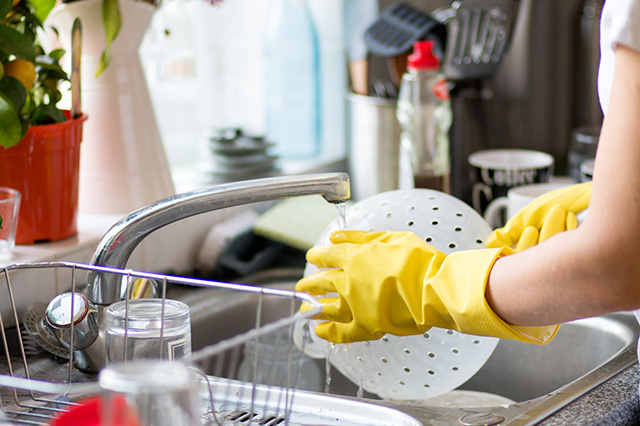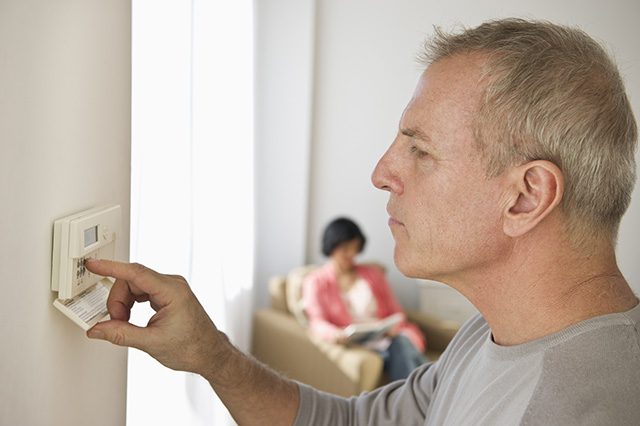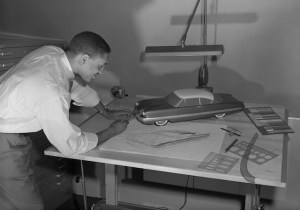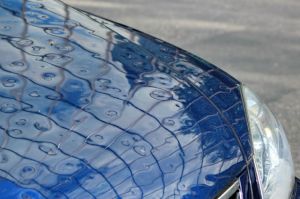In an era ruled by technology and innovation, it’s easier than ever to live comfortably in your own energy-efficient home. Making a few simple changes will not only benefit your wallet, but can result in a positive cultural and ecological impact for years to come.
Sealing Your Home
Taking the time to insulate and properly seal the hidden air leaks in your home is an effective way to cut costs and create a healthier environment. To maximize home efficiency, seal all the gaps where air can leak in or out, including gaps around doors, windows, vents and more.
Door Sweep
Weatherproofing your home can save you up to 20% of your heating costs. Doors leading from the house to the garage are often not well-sealed. Installing a door sweep to seal the gap is one way to winterize your home that will help prevent air from coming in and out of your home. Stopping this air flow will keep heated indoor living spaces more comfortable and prevent an increase in your energy bills.
Attic Ventilation
Improve your home’s total comfort and energy effectiveness by sealing areas in your attic, one of the most prone spots for air leaks. According to Energy Star, best known for its symbol helping consumers easily identify energy-efficient products, “proper ventilation of the attic with natural air flow keeps the roof deck cool and dry, extending the life of roof shingles and preventing ice dams without using the energy needed to run an attic vent fan. Be sure attic soffit vents and gable vents are not blocked so air flows freely through them.”
Check Ducts
Checking for holes in your ducts can significantly affect your heating and cooling systems. Look for holes, tears and other signs of leaking ducts and seal them using mastic or metal tape. In typical houses, about 20% of the air that moves through the duct system is lost due to leaks, holes and poorly connected ducts, according to Energy Star. Learn how to improve your home’s duct system.
Light Bulb Replacements
On simple upgrade for a more energy-efficient home is to replace light fixtures and traditional incandescent bulbs. While compact fluorescent lights and LEDs are more expensive, their efficiency and longevity cost you less down the road.
Turn Off the Light
What’s easier than flipping a light switch? A 75-watt light bulb left on for a few hours a day can total roughly two percent of your monthly electricity bill. Get in the habit off always turning off the lights when leaving a room.
Outlets
Just like light switches, always remember to unplug any battery chargers or power adapters when not in use.

Decrease Water Usage
We often forget how big of a role water plays in our lives. The Environmental Protection Agency recently reported that the average American family uses 300 gallons of water each day. So what can you do? Do little things to cut costs like not letting water run when it is not necessary and scraping dishes instead of rinsing them before loading in the dishwasher. Wait until there is a full load before running your dishwasher and use the air-dry option if available. According to Petro’s energy savings tips, you can use nearly 5,000 more gallons of water a year if you hand wash your dishes. Let dishes air dry to save even more energy.
Home Office Efficiency
While working from home saves time and money on commuting, it can increase home energy bills. Cut costs by utilizing the power save options built into your devices’ settings.
Air Conditioner Installation
In the market to invest in a new AC system? Keep an energy-efficient home by installing Energy Star-certified units. And just like windows, doors and skylights, have ductless and central air installed by a trained professional. When using your AC system, utilize programmable thermostats for better temperature control and energy conservation.
Replace Air Filters
Old air filters can restrict airflow and cause your home’s heating or cooling system to run longer and waste energy.
Home Heating Systems
Consider turning down the thermostat when you don’t need the heat. Adding insulation and sealing up air leaks will help preserve the heat in your home. Once the time comes to replace your heating system, look for high-efficiency equipment. While the energy-efficient equipment may cost more upfront, the long-term savings in energy and maintenance are worth the investment.
Install Energy-Efficient Windows
Drafty windows are dangerous for your energy bill. During the winter months, Energy Star recommends replacing your screens with storm windows to provide an extra barrier to the cold outside air. Caulk and weather-strip around windows and doors that leak air. With proper installation and sealing, your new windows can help improve your comfort, cut drafts and reduce fading of interior furnishings. And as the seasons change, also be sure to insulate window units with tight-fitting AC covers, which will prevent cold air from coming in and warm air from escaping.
By taking simple measures and adjusting your day-to-day behaviors and habits, you can significantly reduce energy consumption.
Take the first step to save energy and cut costs by calling Petro. AAA members who sign up as a new customer with Petro Home Services can receive special offers including $200 off any new heating or AC system. Learn more.
How do you maintain a more energy-efficient home? Share your tips in the comments.














